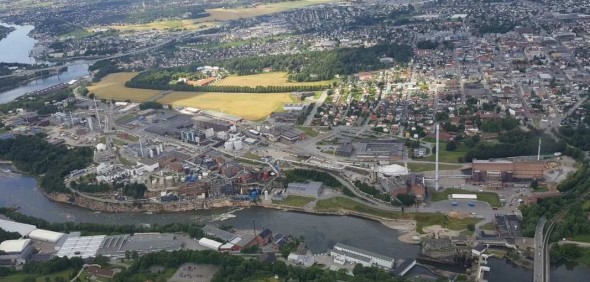Borregaard to increase capacity of its Ice Bear speciality cellulose
As I mentioned in some previous post, Borregaard
facility in Sarpsborg is a clear example of forest integrated biorefinery.
It offers a comprehensive portfolio of bioproducts (lignin-based products, specialty
cellulose, 2G bioethanol, vanillin and other fine chemicals) with a wide range
of applications for different sectors (construction, agriculture, food and
beverages, transportation and pharmaceutical).
The Norwegian company is increasing
specialisation through the market introduction of new products as Exilva microfibrillar
cellulose, Sensefi advanced texture systems and Ice Bear speciality cellulose. With
reference to the last one, Borregaard have just announced an investment of NOK
115 million (over 12.7 M€) to increase its production capacity at Sarpsborg
(see press
release). This investment will be finalised in the second half of 2018 and
will bring Ice Bear capacity to approximately 60,000 tons. The ramp-up of the
Ice Bear production will be based on market demand. The volume potential for
Borregaard is estimated to be around 20,000-30,000 tons per year by end of
2018.
Figure 1. Borregaard facility in Sarpsborg
(extracted from Borregaard web page)
The Ice Bear project is Borregaard's main
initiative to drive further its strategy of targeting “niches within the
niches” as well as improved offering to existing markets within speciality
cellulose. Ice Bear is a high alpha cellulose for high end performance
products. The initial Ice Bear investment has already proven that the
technology can deliver a world class quality product into segments with the
strictest requirements. The new investment will enable Borregaard to develop a
more optimal production process in addition to increase its capacity.





